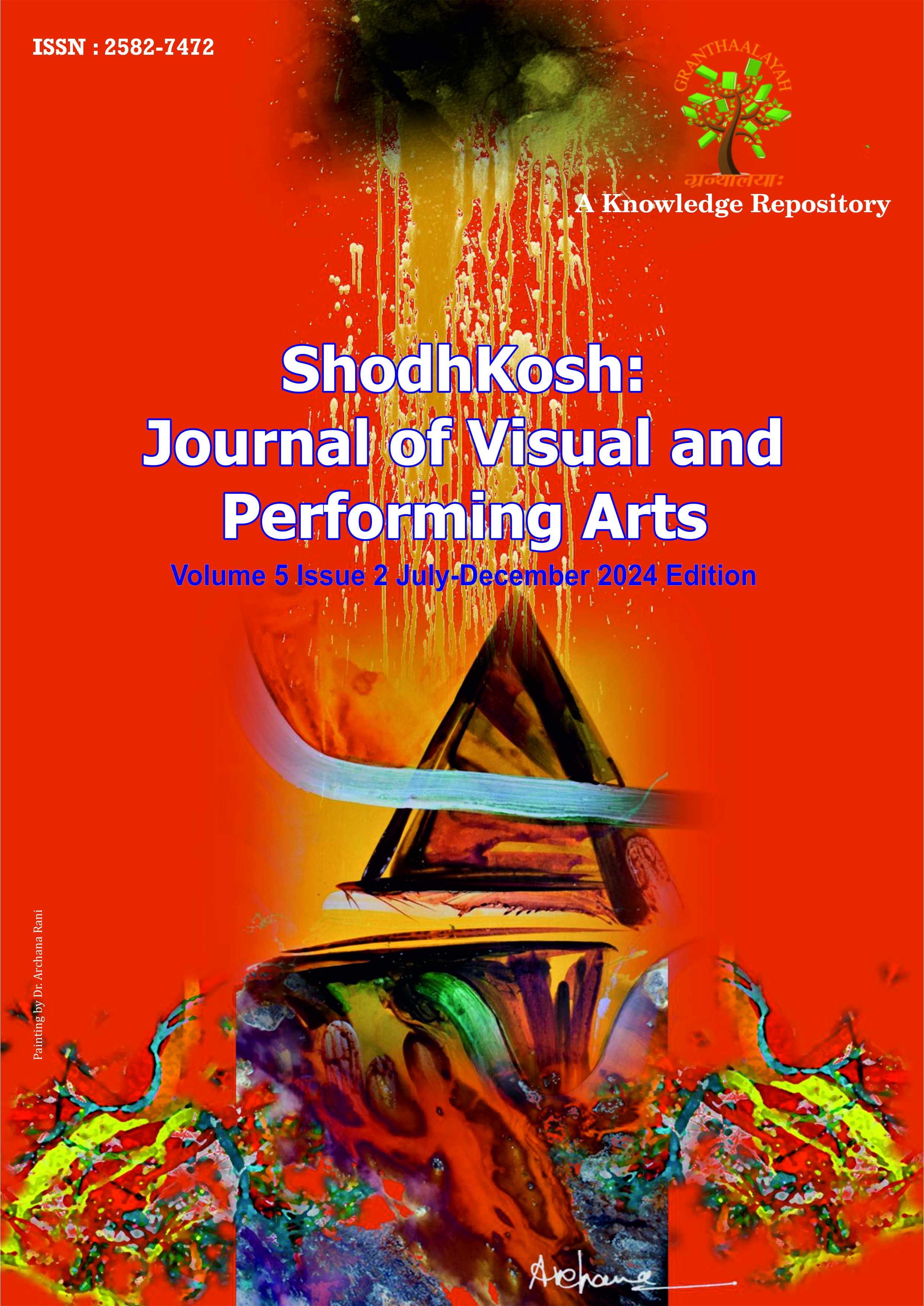STUDY OF THE SOCIAL JUSTICE CHANGES MADE IN THE INDIAN CONSTITUTION AND CIVIL LAWS TO IMPROVE THE SOCIAL STATUS OF GIRLS IN THE PRESENT SOCIETY
DOI:
https://doi.org/10.29121/shodhkosh.v5.i2.2024.3975Abstract [English]
The status of girls in Indian society has undergone significant transformations over the years, driven in large part by changes in the Constitution of India and various civil laws aimed at ensuring gender equality and social justice. This paper explores the social justice measures embedded in the Indian Constitution and civil laws designed to enhance the social standing of girls in modern-day India. Through an examination of constitutional provisions, landmark legal reforms, and evolving societal norms, the paper highlights the progress made while identifying the challenges that remain in achieving complete gender equality.
This paper aims to explore the social justice changes made in the Indian Constitution and civil laws that specifically target the empowerment of girls. It analyzes key constitutional provisions, such as the Right to Equality and special protections under Articles 15 and 46, which lay the foundation for gender equality. The study further examines landmark legal reforms, including the Right to Education Act, the Prohibition of Child Marriage Act, and the Protection of Children from Sexual Offences Act, which directly benefit girls by ensuring better access to education, protecting them from exploitation, and promoting their overall welfare.Additionally, the paper evaluates governmental policies like the Beti Bachao Beti Padhao initiative and the Sukanya Samriddhi Yojana, which incentivize education and financial security for girls. Through a comprehensive review, the paper highlights the successes of these reforms in improving girls' education, health, and legal protection. However, it also identifies the persistent challenges, such as entrenched cultural biases, gender-based violence, and In conclusion, while significant progress has been made, the study underscores the need for further efforts to bridge the gap between legal provisions and actual societal change, urging for a more comprehensive, multidimensional approach to tackling gender inequality in India. This paper contributes to understanding the legal and social mechanisms at play and the ongoing struggle for gender justice for girls in contemporary Indian society.
References
The Constitution of India. (1950). Government of India. Retrieved from: https://www.constitutionofindia.net/
Right of Children to Free and Compulsory Education (RTE) Act, 2009. (2009). Ministry of Human Resource Development,
Government of India. Retrieved from: https://mhrd.gov.in/sites/upload_files/mhrd/files/rte.pdf
The Constitution of India. (1950). Government of India. Retrieved from: https://www.constitutionofindia.net/
Right of Children to Free and Compulsory Education (RTE) Act, 2009. (2009). Ministry of Human Resource Development, Government of India. Retrieved from: https://mhrd.gov.in/sites/upload_files/mhrd/files/rte.pdf
The Juvenile Justice (Care and Protection of Children) Act, 2015. (2015). Ministry of Women and Child Development, Government of India. Retrieved from: https://wcd.nic.in/
Sukanya Samriddhi Yojana. (2015). Ministry of Finance, Government of India. Retrieved from: https://www.sbi.co.in/
National Policy for Children, 2013. (2013). Ministry of Women and Child Development, Government of India. Retrieved from: https://wcd.nic.in/
National Family Health Survey (NFHS-5), 2019-20. (2021). Ministry of Health and Family Welfare, Government of India. Retrieved from: http://rchiips.org/nfhs/
UNICEF India, "Child Marriage in India: A Desk Review". (2015). United Nations Children’s Fund. Retrieved from: https://www.unicef.org/india/
Rao, N. (2019). "Gender, Caste, and the Indian State: Changing Narratives of Girlhood in India". Feminist Studies, 45(2), 285-305. DOI: https://doi.org/10.1353/fem.2019.0042
Saraswati, L. (2016). "Child Marriage and Female Education in India: The Socio-Cultural Paradigm." International Journal of Social Sciences and Humanities, 4(2), 103-115.
Patel, K. (2020). "The Legal Protection of Women and Girls in India: A Critical Appraisal." Asian Journal of Law and Society, 7(1), 4561. DOI: https://doi.org/10.1017/als.2019.21 DOI: https://doi.org/10.1017/als.2019.21
Kabeer, N. (2005). "Gender, Poverty, and Inequality: A Brief History of Women's Empowerment." Development in Practice, 15(1), 1019.
Gender Equality and Women’s Empowerment in India: A Report by the International Centre for Research on Women (ICRW). (2021). Retrieved from: https://www.icrw.org/
Bennett, L. (2019). "Breaking the Chains: Legal Reforms and Gender Equality in India." Asian Journal of Comparative Law, 14(1), 124. DOI: https://doi.org/10.1017/ajcl.2019.2
"Legal and Policy Framework on Gender Equality in India." (2020). UN Women India. Retrieved from: https://www.unwomen.org/en/ "Tracking Gender Equality: A Guide to Indicators," in Gender and Development: A Practical Guide to Gender Analysis. (2018). Edited by R. Sharma & A. Mehta. Sage Publications.
Chandran, S. (2021). "Challenges in Law Enforcement Regarding Gender-Based Violence in India." Indian Law Review, 8(2), 120-135. DOI: https://doi.org/10.1080/24730580.2021.1939194
Goel, A. & Agnihotri, S. (2020). "Understanding the Legal Empowerment of Girls in India: Gaps, Challenges, and the Way Forward." Indian Journal of Human Rights, 11(1), 28-41.
"Gender Justice and Empowerment in India: A Focus on Girl Children," UNICEF Annual Report 2020. (2020). United Nations
Children’s Fund. Retrieved from: https://www.unicef.org/
World Economic Forum (2022). "Global Gender Gap Report." Retrieved from: https://www.weforum.org/reports/global-gender-gapreport-2022
"India’s National Action Plan for Children (2016-2020)." (2016). Ministry of Women and Child Development, Government of India.
Retrieved from: https://wcd.nic.in/
Downloads
Published
How to Cite
Issue
Section
License
Copyright (c) 2024 Rakesh Vaidya, Dr. Jitendra Gupta

This work is licensed under a Creative Commons Attribution 4.0 International License.
With the licence CC-BY, authors retain the copyright, allowing anyone to download, reuse, re-print, modify, distribute, and/or copy their contribution. The work must be properly attributed to its author.
It is not necessary to ask for further permission from the author or journal board.
This journal provides immediate open access to its content on the principle that making research freely available to the public supports a greater global exchange of knowledge.




























